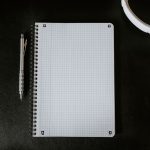How I Stopped Checking the News First Thing in the Morning (my Tips)
It started subtly, as most bad habits do. A quick glance at the headlines while my coffee brewed. Then, a deeper dive into an article or two before my feet even hit the floor. Soon, checking the news first thing in the morning became an ingrained ritual, an automatic reflex. What I initially thought was a way to “stay informed” quickly morphed into a source of low-level anxiety, a feeling of being overwhelmed before my day had even truly begun. My brain felt cluttered, my focus scattered, and my mood often dipped before I’d even greeted the sun. I knew something had to change, and after much trial and error, I found my way out of that digital quicksand. Here’s my story, and the practical tips that helped me reclaim my mornings.
The Unseen Toll: Why My Mornings Were Starting on the Wrong Foot
For years, I believed that diving headfirst into the newsfeed was a sign of being a responsible, engaged citizen. I wanted to know what was happening in the world, to be prepared, to understand the latest developments. But what I was actually doing was exposing my still-forming morning mind to a barrage of negativity, fear, and urgency. My cortisol levels likely spiked, my amygdala (the brain’s alarm center) was likely on high alert, and my prefrontal cortex (responsible for planning and decision-making) was immediately overloaded with external stressors.
This wasn’t just about feeling a bit stressed. It had tangible impacts on my day. I’d find myself distracted, replaying headlines in my head during breakfast, struggling to focus on my initial tasks, or feeling a sense of dread that lingered for hours. My ability to concentrate was diminished, and my creative spark felt dampened. The dopamine hit from “new information” was fleeting, quickly replaced by a sense of unease. I was starting my day reactively, letting the world’s problems dictate my internal state, rather than proactively setting a positive tone for myself. It was a vicious cycle of information overload leading to mental fatigue, all before 9 AM. I needed to break free from this constant state of digital reactivity and cultivate a sense of calm and control in my most vulnerable hours.
My First Steps Towards a News-Free Dawn: Setting the Stage for Change
The first step wasn’t about willpower; it was about acknowledging the problem and setting up my environment for success. I realized that simply “trying harder” not to check my phone was a losing battle against deeply ingrained habits and the persuasive design of news apps and social media feeds. My initial strategy focused on making it *harder* to access the news and *easier* to do something else.
My phone was the primary culprit, so it became the primary target. I started by physically removing my phone from my bedroom at night. Instead of charging it on my nightstand, I moved it to the kitchen counter. This created a crucial physical barrier. When my alarm went off (on an actual alarm clock, which I bought specifically for this purpose), there was no phone immediately within reach to grab and scroll. This simple act of putting a few extra steps between me and my device was surprisingly powerful. It gave me a moment of conscious decision-making before the habit could kick in automatically. I also disabled all news app notifications, ensuring that even if my phone was nearby, it wouldn’t actively pull me in with alerts about breaking stories. This initial environmental engineering was pivotal in disrupting the automatic chain of events that led to morning news consumption.
Creating a “No-Go” Zone and Time Limit
Beyond the physical distance, I established a “no-go” zone for news consumption. For me, this meant absolutely no news (digital or traditional) before 9 AM. This wasn’t just about my phone; it included turning off the morning news channel on TV and avoiding news websites on my computer. I needed a clear boundary to protect my early hours. This boundary provided a mental safety net, allowing me to fully engage with my new morning practices without the internal debate of “just one quick check.” The goal was to create a sanctuary of calm and focus where my mind could wake up gently, on its own terms, rather than being jolted awake by external events.

Crafting a New Morning Ritual: Replacing the Scroll with Something Better
Simply removing a habit leaves a void, and nature abhors a vacuum. I quickly learned that for my new news-free mornings to stick, I needed to actively replace the old habit with new, positive ones. This was where the real transformation began. Instead of scrolling, I started to fill those precious early moments with activities that nourished my mind and body, setting a truly intentional tone for the day.
- Mindful Moments: I started with just five minutes of simple meditation or deep breathing. This wasn’t about achieving enlightenment, but about grounding myself. I used guided apps initially, then transitioned to simply focusing on my breath. This practice helped me tune into my internal state rather than external chaos. (Internal Link: Mindful Living Practices)
- Journaling for Clarity: After meditation, I’d pick up a journal. Sometimes I’d write about my dreams, sometimes about what I was grateful for, and other times I’d simply do a brain dump of anything on my mind. This allowed me to process thoughts and emotions without judgment, clearing mental space for the day ahead. It became a powerful tool for self-reflection and setting intentions.
- Reading a Physical Book: Instead of digital news, I’d read a chapter of a non-fiction book that inspired me or a novel that offered an escape. The tactile experience of a physical book, away from a glowing screen, felt incredibly calming and stimulating in a positive way. It engaged my brain differently, without the constant alerts and hyperlinks.
- Movement and Hydration: A glass of water immediately upon waking, followed by some gentle stretching or a short walk, became non-negotiable. This physical activity helped wake up my body and circulate blood, providing a natural energy boost without relying on caffeine or digital stimulation. (Internal Link: Boost Your Morning Productivity)
- Planning My Day (Offline): Before touching any device, I’d review my top priorities for the day. I used a simple notebook or planner to jot down 3-5 key tasks. This gave me a clear sense of direction and purpose, allowing me to approach my workday with focus rather than feeling reactive to emails or news alerts.
These activities weren’t about being productive in the traditional sense; they were about being present and intentional. They helped me build a mental fortress against the information deluge, ensuring that my inner world was stable before I engaged with the outer one. The consistent practice of these habits slowly but surely rewired my brain, making the new routine feel natural and deeply rewarding. It reinforced the idea that I could proactively shape my experience of the day, rather than letting it be shaped for me.
Navigating the Urge: How I Handled Relapses and Recommitted
Let’s be real: breaking a deeply ingrained habit isn’t a straight line. There were days, especially in the beginning, when the urge to check the news was almost overwhelming. A particularly anxious night, a feeling of missing out, or just sheer force of habit would sometimes win. I’d find myself reaching for my phone, unlocking it, and almost instinctively opening a news app before I even realized what I was doing.
When these relapses happened, my strategy wasn’t to beat myself up. Self-criticism only fuels the cycle of negativity. Instead, I practiced self-compassion and curiosity. I’d acknowledge the slip, observe the feeling that triggered it (often anxiety or boredom), and then gently redirect myself. If I caught myself mid-scroll, I’d simply close the app, put the phone down, and return to whatever positive morning ritual I was supposed to be doing. Sometimes, I’d


